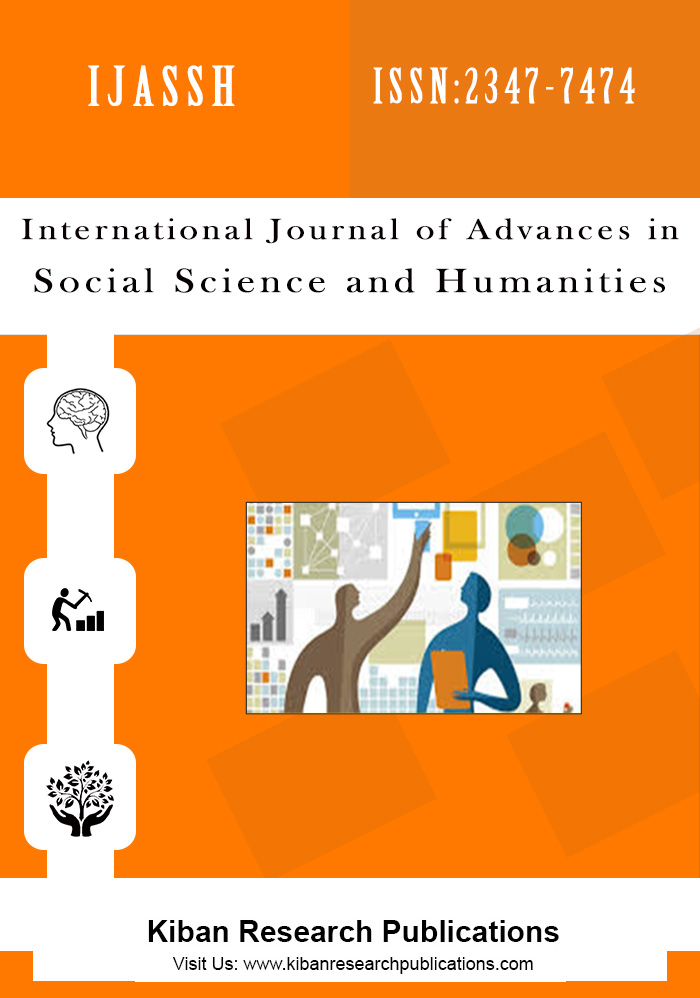Progress amid the East-Indians in V. S. Naipaul’s Selected Fiction
Abstract
Sir Vidiadhar Surujparasad Naipaul provided structure and words to the girmit ideology and the Indian diaspora its unique exposition and awareness. Naipaul’s first writing material started with the Caribbean. Trinidadian subjects engage an advantaged position, essential in Naipaul’s writings. In exploring this theme, my focal point is on five fictional works, namely [1-4].The rationale is to explore illustrations in Naipaul’s writing by positioning the relevant representations of indenture in a greater discursive perspective. The foremost apprehensions in post-colonial literatures, particularly in Naipaul’s previous imaginary writings correspond to mainly the three aspects of Trinidad as it emerges in Naipaul’s works. At the outset, the existence of the Indo-Trinidadians is a replication of living in India, their native homeland. They also take on the Western means in their innovative colonial society; in the procedure erode significant aspects of their mores and distinctive Indian individuality. Secondly, they were focused to an individuality predicament amid two domicile areas. Thirdly, the dislocation faced by the indentured labourers and their successors. Naipaul in his writings highlights the un-accommodated man’s recurring efforts to find a secure position in a dilapidated and unsystematic world, his great effort for individualism although facing deprival, dislocation and unfair treatment. He mocks the sham of independence for former British colonies. Meaningful issues: family ceremonies in uniting people, the idea of progress being associated with a British education and the colonial stereotype of the East Indians are discussed by Naipaul.One could regard this study as an acknowledgment to an isle where indentured labourers were dispatched and it is one of the noteworthy areas on the map of the fictional world produced by V. S. Naipaul, a successor of the indentured immigrants.
Keywords: Diaspora, Displacement, Identity, Indenture, Progress.
References
Naipaul VS (1957) the Mystic Masseur, Harmon’s worth: Penguin Books Ltd.
Naipaul VS (1959) Miguel Street, Portsmouth: Heinemann.
Ltd. Naipaul VS (1961) A House for Mr. Biswas, London: David Campbell Publishers
Naipaul VS (1967) the Mimic Men, Picador, London.
Ebel C (1988) Ludic Caribbean, OPUS Wurzburg: University Wurzburg.
Dhareshwar V (1989) “Self-Fashioning, Colonial Habitus and Double Exclusion: Naipaul’s The Mimic Men, Criticism, 31 (1).
Hogan PC (2000) Colonialism and Cultural Identity: Crises of Tradition in the Anglophone Literatures of India, Africa and the Caribbean, Albany: State Univ. of New York Press.
Mishra V (2007) the Diasporic Imaginary and the Indian Diaspora, Wellington: Asian Studies Institute.
Mishra V (1996) “Bordering Naipaul: Indenture History and Diasporic Poetics†Diaspora: Journal of Transnational Studies 5.2, pp.189-237.
Naipaul V S (2002) The Writer and the World Essays, edited by Pankaj Mishra, New York: Alfred A. Knopf.
Nandan S (2006) the Diasporic Consciousness: From Biswas to Biswasghat, Lautoka: The University of Fiji.
Thieme JVS Naipaul’s (1985) The Mimic Men: a Critical View, London: Collins.




